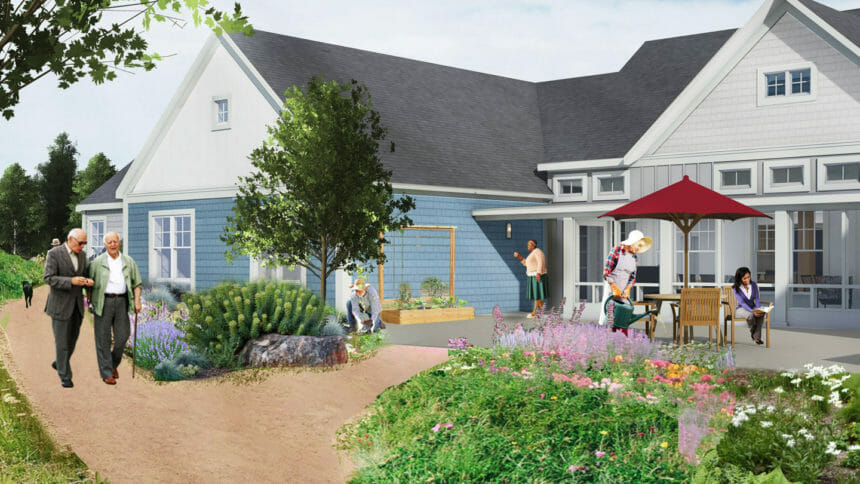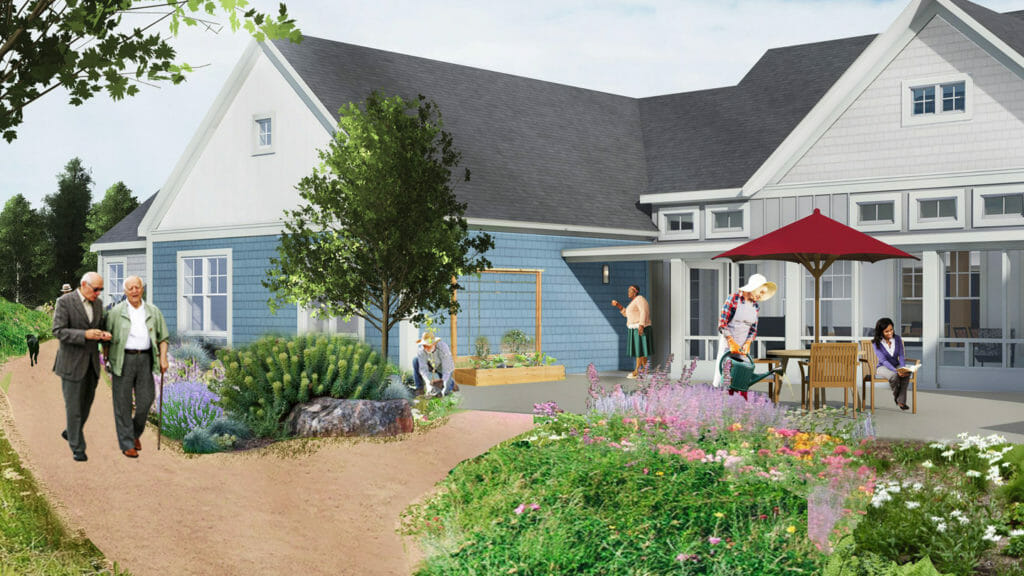

A proposed nursing home in a New England resort town will feature a fairly uncommon way to attract staff: 48 units of subsidized housing on a campus shared with dozens of local elders.
The Edgartown, MA, Planning Board recently approved Navigator Homes of Martha’s Vineyard plan to create a Green House-style nursing home community, with five, self-contained buildings where residents would have their own rooms but share kitchens, dining and living areas.
The five homes would have 66 skilled nursing beds with one building intended for short-term care and the other four serving as long-term, residential care.
“Our model is family, family, family,” David McDonough, president and CEO of Navigator Homes, told McKnights Long-Term Care News on Tuesday. And his iteration of family includes staff, who have been increasingly hard to attract across the US, but especially so in costly New England tourist areas where frontline workers are often priced out of the housing and rental markets.
Officials with the Green House project said workforce housing is not a standard part of its model, but they applauded the community for its planned approach to caregiving support.
“While Martha’s Vineyard presents a particularly notable example of the challenges that caregivers face when looking for affordable, high-quality housing in areas with a higher cost of living, it certainly isn’t an outlier,” said Alex Spanko, director of communications and marketing for the Green House Project. “We hope this example inspires more providers — both Green House adopters and others — to consider the inclusion of workforce housing in new eldercare projects.”
In the Green House model, workers are fully incorporated into their residents’ lives, and a consistent presence of specific staff members is a performance hallmark. As universal workers, staff fill varying roles throughout their day. For example, an employee might handle food preparation one day and be responsible for housekeeping services the next. McDonough said the model has shown to have “very high satisfaction” among employees.
In the Martha’s Vineyard project, the tipping point for attracting workers committed to such jobs could be the inclusion of subsidized housing.
McDonough said nearby Cape Cod has a -1% vacancy rate with people forced to live in their vehicles and at campgrounds due to a lack of affordable housing. Calling the situation “extremely acute,” he said the goal is to provide a skilled workforce for the nursing home that does not rely on traveling nurses or aides.
“It’s not just a benefit for workers and their families, who too often struggle with high rents and precarious living arrangements; incorporating workforce housing into eldercare developments helps to fight the ageist notion that nursing homes, assisted living communities, and other settings are separate and apart from the rest of society,” Spanko noted. “Building residential units in the vicinity of eldercare communities can create active intergenerational neighborhoods where elders, caregivers, and their families live together and create enriching bonds.”
Martha’s Vineyard Hospital purchased 27 acres for the project, according to the Cape Cod Times. The hospital and Windemere Nursing & Rehabilitation Facility, which the Navigator project would replace, have a combined 219 open staff positions.
The Navigator project’s 48 staff housing units would be split across two apartment buildings, one townhouse, and four duplexes. Rent would be subsidized, with 85% of the units going to staff earning less than 120% of the area’s median income — or 65% of employees.





